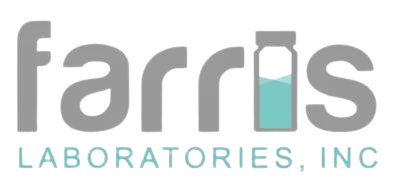Understanding Pharmacy Extemporaneous Compounding
Extemporaneous compounding is a special necessity in the pharmacist’s repertoire. It’s a specialized skill that can help patients who need non-commercially produced or dosed medications.
The FDA describes standard pharmacy compounding as the process of combining, mixing, or changing components to formulate a personalized medication for a patient, following the specific prescription of a licensed healthcare provider. Additionally, the NABP elaborates on compounding as the outcome of a healthcare practitioner's prescription for medication, which arises from the collaborative relationship among the practitioner, patient, and pharmacist during their professional practice.
Extemporaneous compounding, on the other hand, allows a pharmacist to tailor a medication to a patient’s specific needs by altering the dose or formula to create a medicine that is not found in commercial supplies.
There are two types of compounding: simple and complex. Simple compounding can be performed by any trained pharmacist, while complex compounding requires additional post-graduate training and specialized facilities and equipment.
What is extemporaneous compounding and why is it necessary?
Extemporaneous compounding is necessary to treat patients whose needs can’t be fulfilled by commercially produced medications.
If a prescribed dose or form of a medication is unavailable, an extemporaneous compound pharmacist is able to customize a dose or solution for a patient. The pharmacist may mix, alter, or create a dose or mixture specified to an individual’s need if the patient cannot be treated with a standard prescription or dosage. This allows pharmacists to reach a wider group of patients and treat special cases that commercially created drugs would exclude.
Situations where an extemporaneous prescription would be necessary include:
- Instances where a different dose is required than what is commercially available
- Instances where a tablet needs to be administered in liquid form
- When medicines must be delivered via gastrostomy tubes or nasogastric tubes
- When a patient is allergic to an ingredient in the standard medication
- When an FDA-approved drug is not appropriate for treatment
What are the hazards and risks of extemporaneous compounding?
Extemporaneous compounding allows pharmacists to reach more patients by providing customized formulations for specific cases. However, due to factors such as interactions, the stability, and sterility, there are some hazards and risks to be aware of.
Extemporaneous compounding produces medications that are not registered or FDA-approved, therefore, hazards and risks are greater than with approved medicines. This is because the tailored dosages or formulas have not been tested and cleared as safe or effective. It’s up to the professional expertise of the pharmacist to combine and prescribe medications that have been extemporaneously compounded.
Compounding takes many forms; it can be as simple as making a solution by mixing a commercially made tablet with a solvent. However, compounding can be much more complex. and the pharmacist must take into consideration stability, viscosity, interactions, and sterility of the preparations. It’s important to note that extemporaneously compounded medicines are off-label and generally dispensed without testing, although the original components of the medications are tested and regulated.
What are extemporaneous pharmaceutical preparations?
When a drug isn’t readily available, trained compound pharmacists have the authority to prepare a drug using a specified formula. This is called an extemporaneous pharmaceutical preparation.
Extemporaneous preparations are only prescribed on an individual basis per patient. They cannot be distributed wholesale. Active ingredients in extemporaneous compounds may come from commercially available medication or in a pure chemical form.
What is the most common solvent used in extemporaneous prescriptions?
Sometimes extemporaneous prescriptions already take the appropriate form for the patient and are dissolved and ready for absorption or action.
But other times, solvents must be used in order to alter the state of the drug formula and create a solution. Instances that a solution would be needed include, for example, a medication that must be taken orally by a patient who cannot swallow a pill.
Water is the most common solvent used in extemporaneous prescriptions. This is due to its ability to dissolve a wide range of substances, its general lack of toxicity, and its compatibility with the body. In addition, water is cost-effective.
However, depending on how the medication is prepared, other solvents such as alcohol (ethanol), glycerin, and propylene glycol may also be used either alone or in combination with water to dissolve the active ingredients. The choice of solvent depends on the physical and chemical properties of the ingredients involved in the prescription.
Different qualities of water are used as solvents, depending on the use. Tap water or regular drinking water should not be used as a solvent unless it is purified. Regular tap water contains dissolved chemicals that may interfere with the effectiveness of a preparation.
Common acceptable water qualities for solvents used in extemporaneous prescriptions:
- Purified water
- Highly purified water
- Water for injections
- Sterilized water for injections
However, other solvents or co-solvents may be used if the drug is not sufficiently soluble in water, or if the drug is intended for certain properties.
Common acceptable cosolvents for extemporaneous prescriptions:
- Alcohols
- Esters
- Fixed vegetable oils
- Ethyl ether
- Glycofurol
- Dimethyl sulfoxide
Whether it’s a medication that needs to be altered (such as a liquid versus a pill, for example) or a dosage amount that is not commercially produced, extemporaneous compounding is a solution. This allows patients to receive the customized, tailored medication that they require.
References:
- Falconer, J. R., & Steadman, K. J. (2017). Extemporaneously compounded medicines. Australian prescriber, 40(1), 5–8. https://doi.org/10.18773/austprescr.2017.001
- https://clinicalgate.com/solutions/




